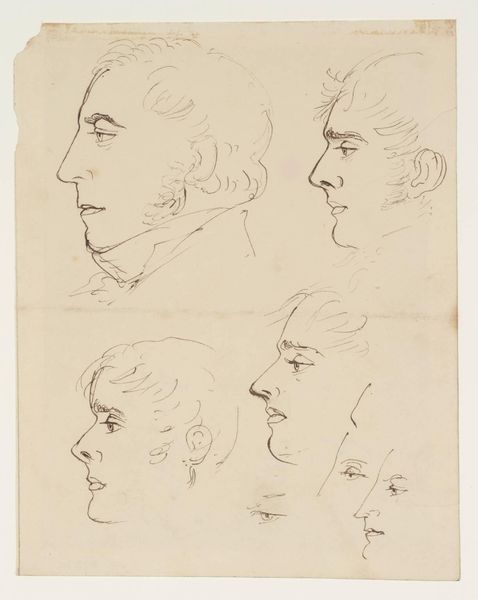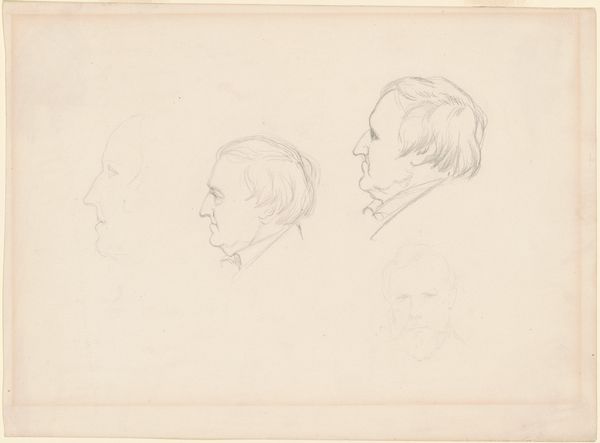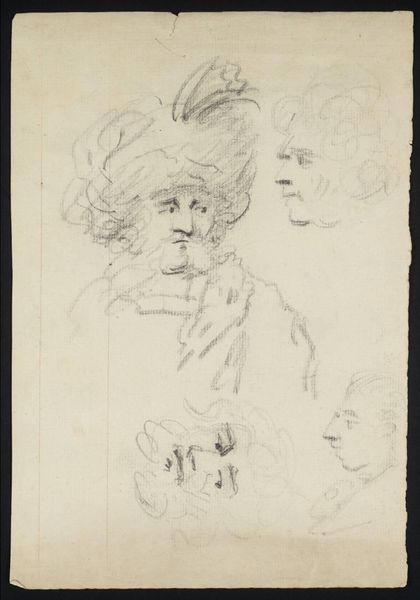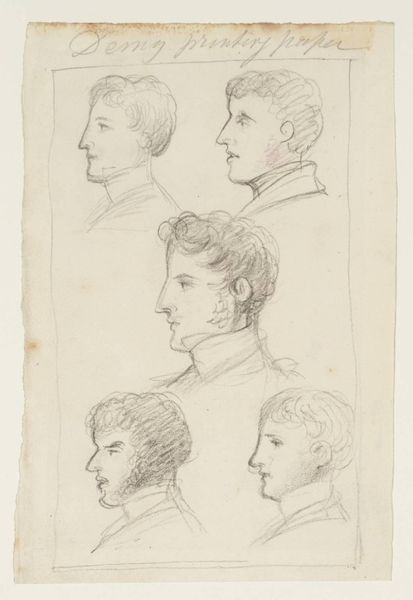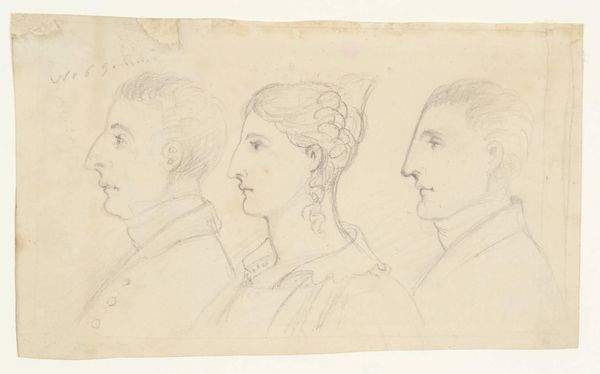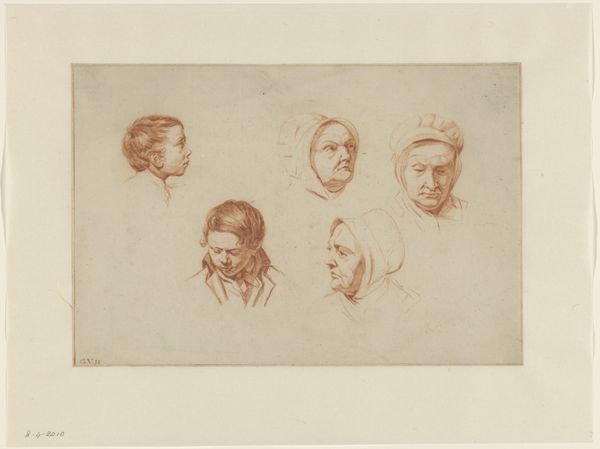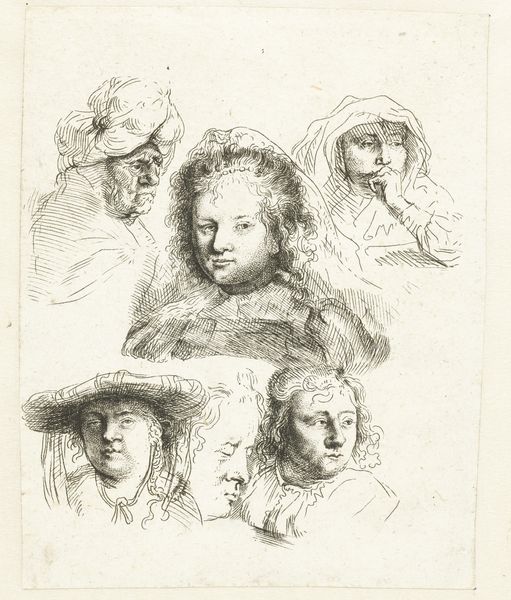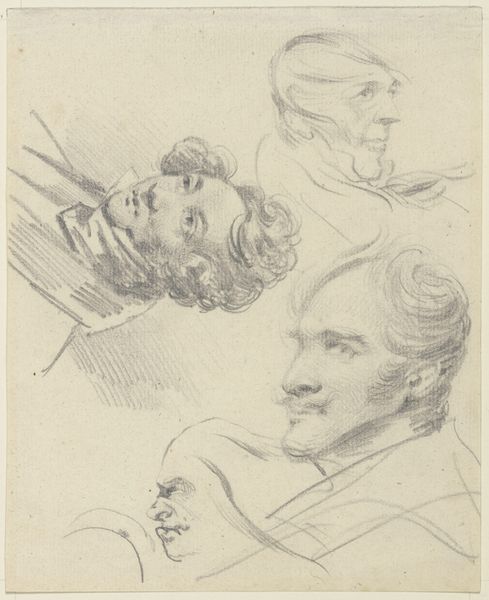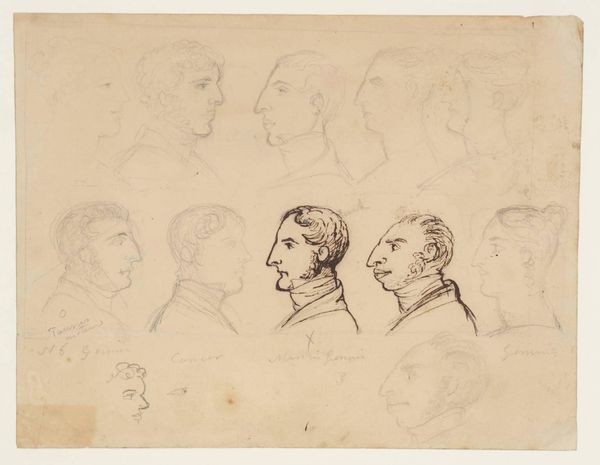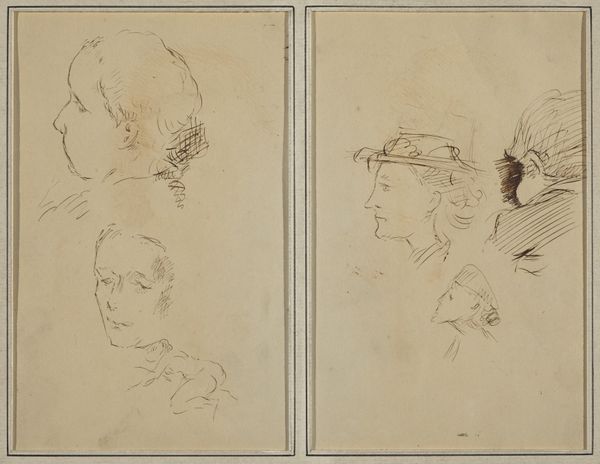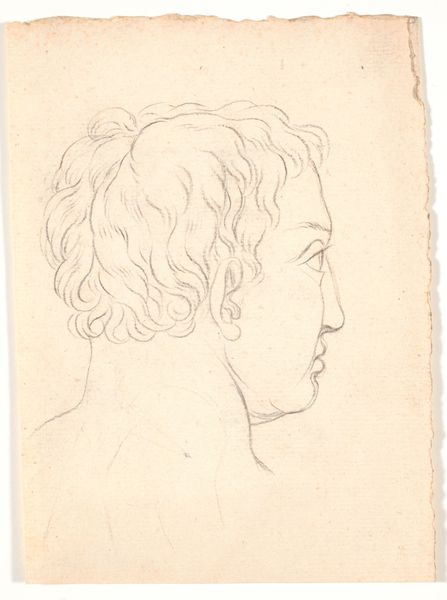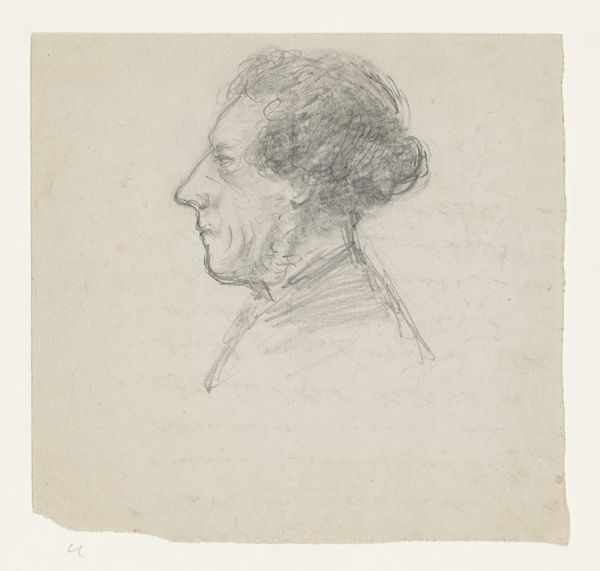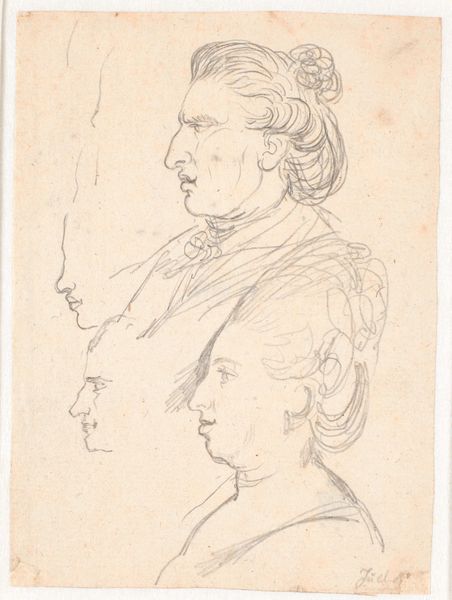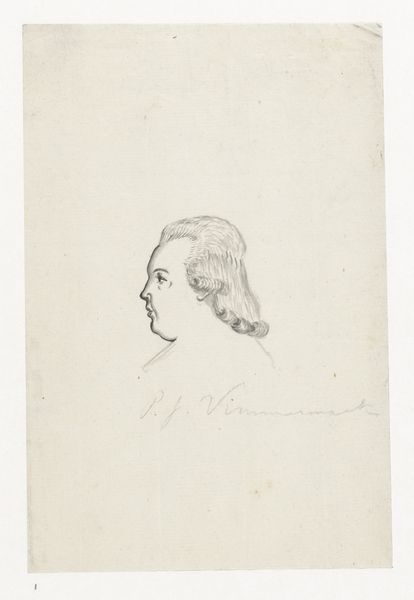
drawing, paper, pencil
#
portrait
#
drawing
#
toned paper
#
light pencil work
#
16_19th-century
#
pencil sketch
#
german-expressionism
#
paper
#
personal sketchbook
#
german
#
idea generation sketch
#
ink drawing experimentation
#
pencil
#
sketchbook drawing
#
portrait drawing
#
pencil work
#
sketchbook art
Copyright: Public Domain
Eugen Eduard Schäffer captured these studies of Philipp Veit in a pencil drawing. Schäffer was working in an era marked by significant social and political upheaval following the Napoleonic Wars. The portrait allows us to consider the construction of identity within the art world. The various profiles and angles suggest an interest in capturing Veit's essence from multiple perspectives. Veit was a prominent figure of the time, associated with the Nazarene movement, a group of artists who aimed to revive religious art. As such, the act of portraying Veit becomes not just a personal exercise but also a reflection of the values and ideals of a specific cultural and artistic circle. By exploring the male face, Schäffer engages with the complexities of representing masculinity. The act of studying Veit's face becomes a way of engaging with and perpetuating certain notions of artistic and cultural authority. The portrait speaks to the intricate relationship between identity, representation, and the socio-political contexts that shape them.
Comments
No comments
Be the first to comment and join the conversation on the ultimate creative platform.
